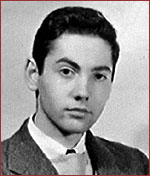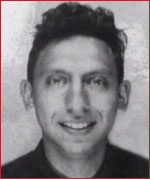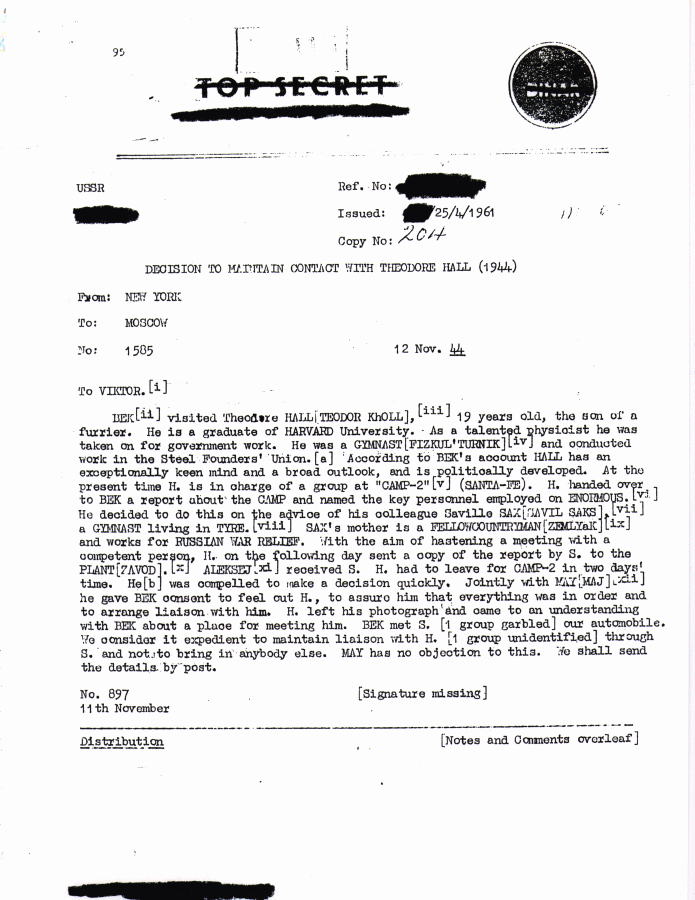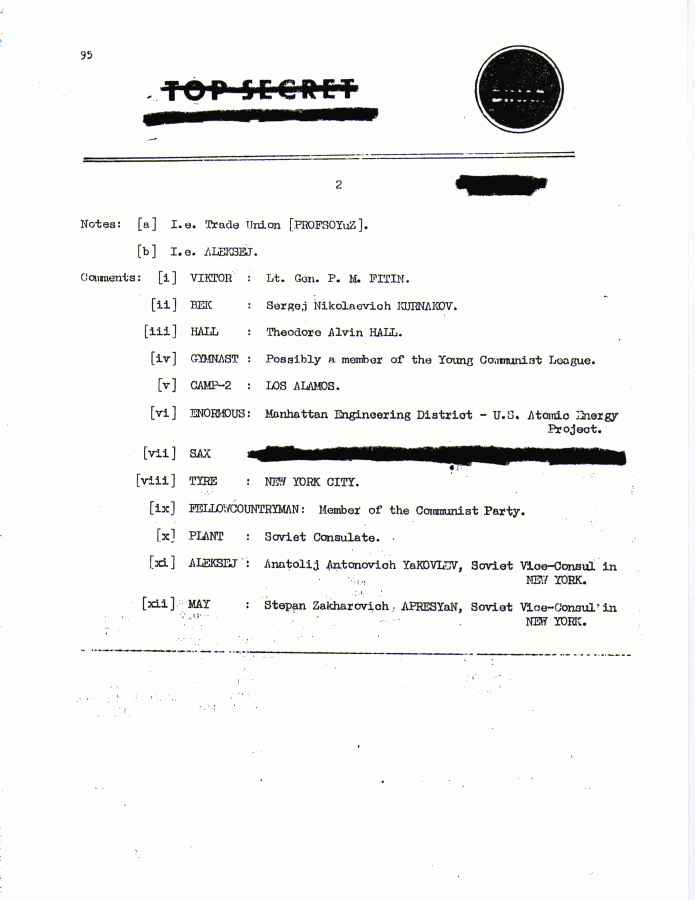 |
 |
|
Read Venona Intercepts
The November 12, 1944 cable:
Theodore Alvin Hall and Saville Sax
Back to Intro
This cable is the first of eight decrypted KGB cables that mention Theodore
Alvin Hall, a precocious Harvard-trained physicist who began passing
information on the atomic bomb to the Soviets soon after he was hired at Los
Alamos at age 19. Because this is the first cable that mentions him, Hall's
name is used in clear text; in later cables he appears under the cover name
Mlad ("Youngster").
A young prodigy, Hall began studying at Columbia University at age 14 and
graduated from Harvard at 18 with a degree in physics. Brought on the Manhattan
Project in early 1944, Hall joined a group working on the physics of implosion,
a critical element in the design of the plutonium bomb. In October of that
year, he met with his best friend and former Harvard roommate, Saville Sax,
wishing to make contact with the Soviets. (Like Fuchs, Hall approached the
Soviets, not the other way around.)
 The Soviets dubbed
Ted Hall "Youngster," because he was only 19 when he became a spy.
The Soviets dubbed
Ted Hall "Youngster," because he was only 19 when he became a spy.
|
|
Hall eventually met with Sergey Kurnakov (Bek in the cable), a Soviet
journalist and KGB agent living in New York. Kurnakov told his superiors that
Hall had "an exceptionally keen mind and a broad outlook, and is politically
developed," meaning he was a committed Communist. He also did not waste time.
At his first meeting with Kurnakov, Hall handed over documents that provided
specifics both of research and who did what at the Manhattan Project.
As the cable points out, Kurnakov's superiors, one of whom was Stepan Apresyan,
chief of the New York office of the KGB, decided to retain Hall as an agent.
Sax, who went by the cover name "Oldster," was the initial liaison and
periodically traveled to New Mexico to accept more materials from Hall. This
went on until Hall left the Manhattan Project after the war's end.
In 1949, when Venona workers decrypted this cable, the FBI set their sights on
Hall and Sax. In 1951, they interviewed the pair, independently, but both
denied any involvement, and neither was arrested.
|  Like his
best friend Hall, Saville Sax somehow escaped prosecution for his
crimes.
Like his
best friend Hall, Saville Sax somehow escaped prosecution for his
crimes.
|
Hall went on to get a doctorate in physics from the University of Chicago, then
took a job at the Sloan-Kettering Institute for Cancer Research in New York. In
1962, he and his wife Joan Hall moved to England, where he became a
biophysicist at Cambridge University's Cavendish Laboratories. Sax died in
1980.
In its initial release of the Venona documents in 1995, the National Security
Agency blotted out the identity of Youngster. But the Venona cables supplied
just enough information for Washington Post reporter Michael Dobbs, in a
February 25, 1996 article, to break the story of Hall's involvement. Till the
day he died—November 1, 1999 at the age of 74—Hall never fully admitted
to undertaking espionage.
The November 12, 1944 cable
Note: Consult the footnotes at the end of the cable for identities of individuals and definitions of terms appearing in capital letters.
| |


|
|
Photo credits
Read Venona Intercepts |
Family of Spies
20th-Century Deceptions |
Decipher a Coded Message
Resources |
Transcript |
Teacher's Guide |
Site Map
Secrets, Lies, and Atomic Spies Home
Search |
Site Map |
Previously Featured |
Schedule |
Feedback |
Teachers |
Shop
Join Us/E-Mail |
About NOVA |
Editor's Picks |
Watch NOVAs online |
To print
PBS Online |
NOVA Online |
WGBH
© | Updated January 2002
|
|
|
|